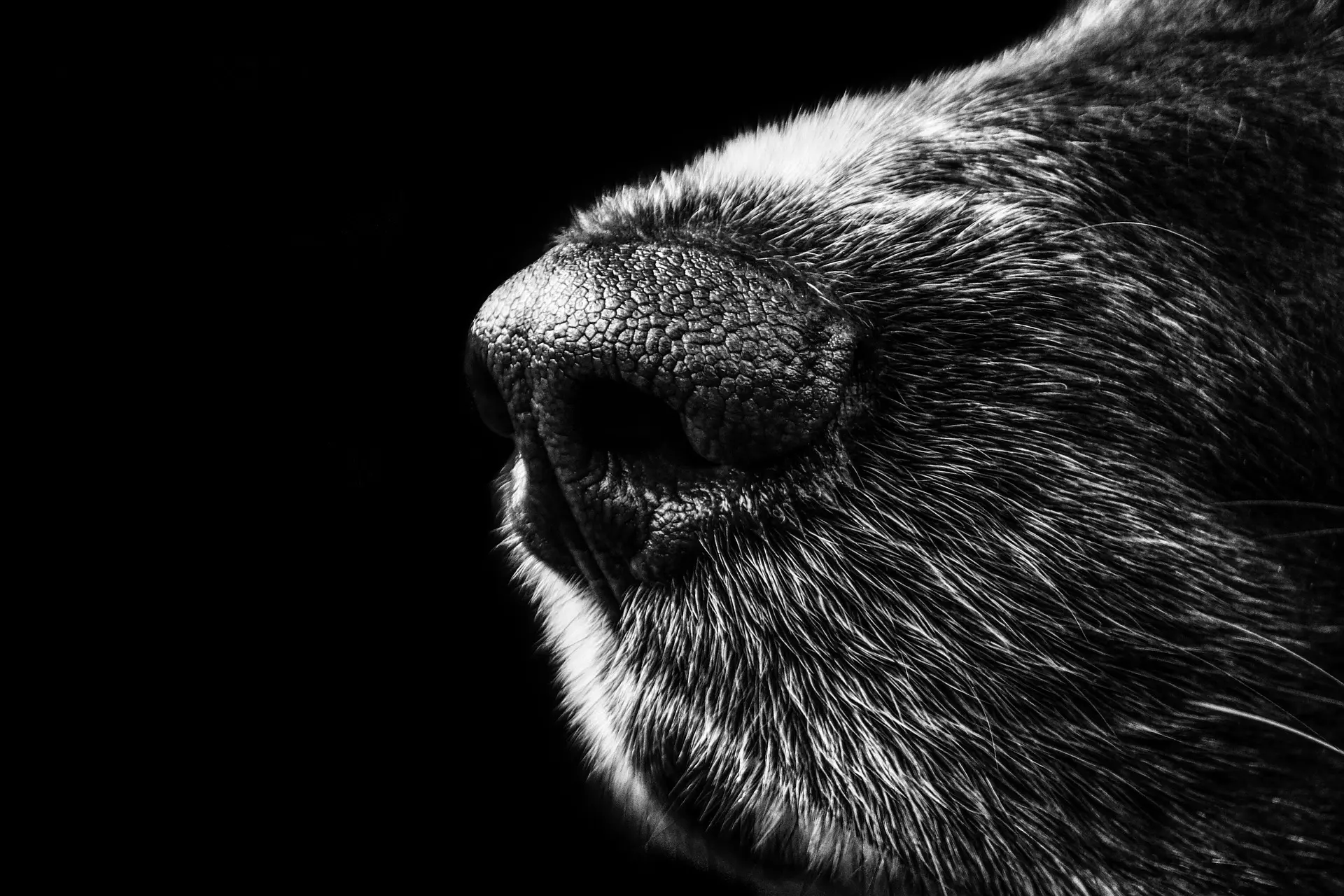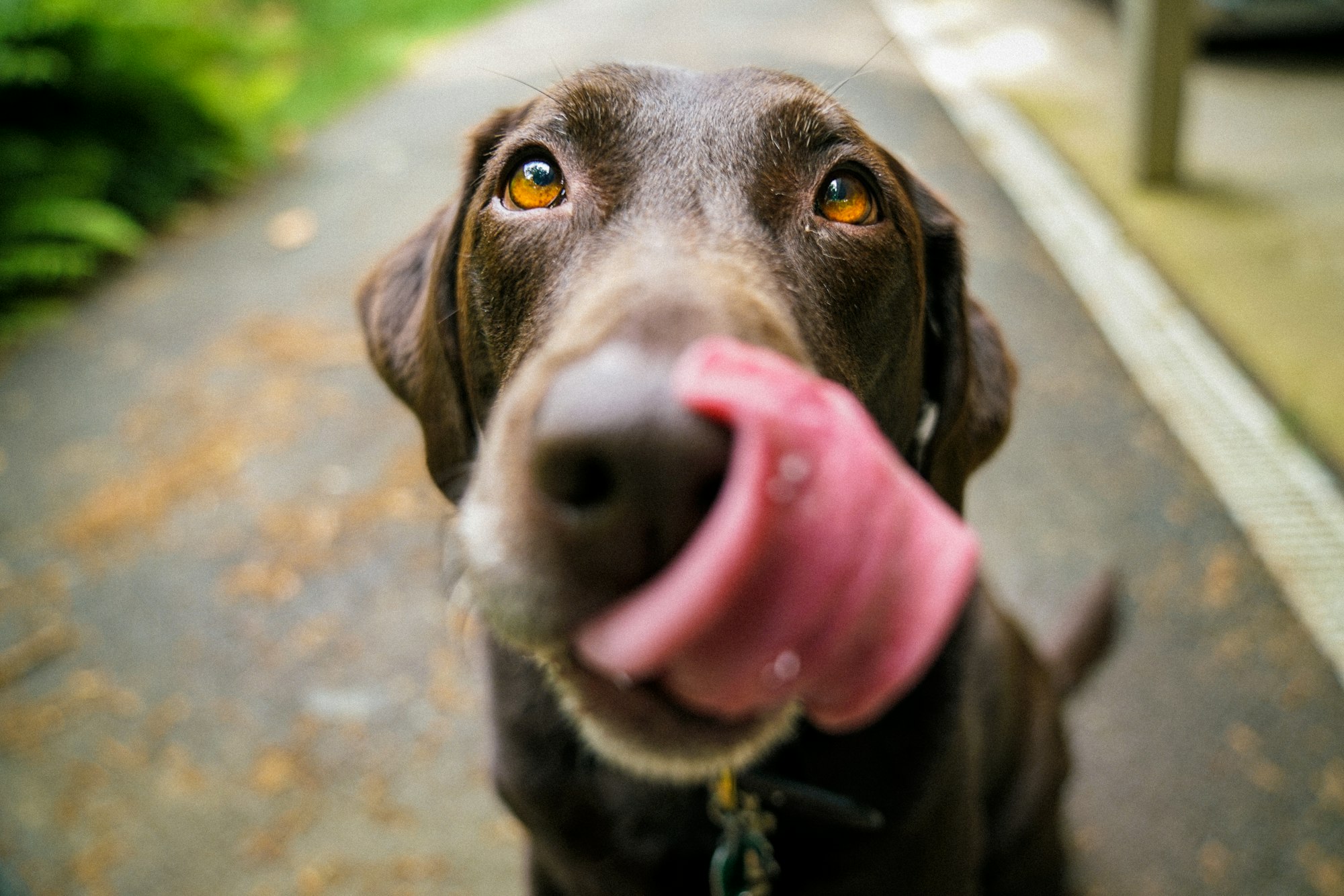Dogs are fascinating creatures with unique behaviors and characteristics. As pet owners, we constantly observe and analyze our furry companions to ensure their well-being. One common concern that often raises questions is the state of a dog's nose. Many pet owners have heard the belief that a dry nose indicates sickness or discomfort in their canine friend. However, is there any truth to this claim?

In this article, we will delve into the topic of a dog's dry nose and explore its potential significance. We will discuss the normal variations in a dog's nose condition, the factors that can contribute to dryness, and when a dry nose might warrant a visit to the veterinarian. By gaining a deeper understanding of this phenomenon, we can better care for our beloved four-legged friends.
I. The Anatomy of a Dog's Nose
Before we dive into the topic of a dry dog nose, it is essential to understand the basic anatomy of a dog's nose. A dog's nose consists of several intricate components that serve important functions beyond just smelling.
The outer part of a dog's nose, known as the planum nasale, is covered in specialized skin. This skin is often moist and contains numerous small glands that produce a thin layer of mucus. The purpose of this mucus is to aid in the detection of scents by trapping and dissolving odor molecules, enhancing a dog's sense of smell.
Additionally, a dog's nose contains blood vessels close to the surface, which helps regulate body temperature. When a dog is hot, these blood vessels dilate to release excess heat. Conversely, in colder conditions, the blood vessels constrict, conserving body heat.

II. Normal Variations in a Dog's Nose
Contrary to popular belief, a dog's nose does not need to be consistently wet for them to be healthy. In fact, a dog's nose can vary in moisture levels throughout the day and even depending on external factors. It is normal for a dog's nose to change from wet to dry and vice versa.
Environmental factors, such as temperature, humidity, and sun exposure, can all impact the moisture level of a dog's nose. For example, spending time in the sun or near a heat source can cause temporary drying of the nose. Similarly, low humidity levels can contribute to dryness. Additionally, vigorous activities like playing or exercising can temporarily dry a dog's nose due to increased panting and respiration.
Furthermore, certain breeds naturally have drier noses than others. Breeds with shorter muzzles, like Bulldogs and Pugs, may have naturally drier noses due to the structure of their nasal passages. It is important to consider these breed-specific differences when assessing the moisture level of a dog's nose.
III. Causes of Dry Nose in Dogs
A dry nose in dogs is a common concern for pet owners. While occasional dryness is usually harmless, persistent dryness can be an indication of an underlying issue. Understanding the potential causes of a dry nose in dogs is crucial in order to address any health concerns and provide appropriate care. In this article, we will explore various factors that can contribute to a dry nose in dogs. By gaining knowledge about these causes, pet owners can better assess their dog's condition and seek timely veterinary assistance if necessary.
I. Dehydration
One of the primary causes of a persistently dry nose in dogs is dehydration. When a dog's body lacks sufficient water, it can lead to dehydration, affecting not only the nose but the overall well-being of the dog. Dehydration can occur due to various factors:
- Inadequate Water Intake: Insufficient water consumption is a common cause of dehydration in dogs. This can happen if the dog doesn't have access to fresh water or if there are changes in their water intake routine.
- Excessive Heat: Dogs can become dehydrated when exposed to high temperatures, especially in hot climates or during intense physical activities. Excessive panting and sweating can lead to fluid loss, resulting in a dry nose.
- Vomiting and Diarrhea: Frequent vomiting and diarrhea can cause dehydration as the body loses essential fluids and electrolytes. These conditions may occur due to dietary indiscretion, infections, or underlying health issues.
II. Environmental Factors
Environmental factors play a significant role in a dog's nose moisture levels. The following factors can contribute to a dry nose:
- Low Humidity: Dry and arid climates with low humidity levels can result in dry noses in dogs. The lack of moisture in the air can affect the nasal passages, leading to dryness.
- Sun Exposure: Prolonged exposure to the sun can cause sunburn in dogs, particularly on areas with less hair coverage like the nose. Sunburned noses can become dry, cracked, and painful.
- Heating and Cooling Systems: Central heating or air conditioning can cause dryness in a dog's nose. These systems can reduce humidity levels indoors, affecting the moisture balance in the nasal passages.
III. Nasal Hyperkeratosis
Nasal hyperkeratosis is a condition characterized by the excessive growth of the outer layer of the nose, resulting in thickened, rough, and dry skin. This condition can occur due to several factors:
- Genetics: Certain dog breeds are more prone to developing nasal hyperkeratosis due to genetic predisposition. Breeds such as Bulldogs, Boxers, and Bull Terriers are more commonly affected.
- Infections: Chronic infections in the nasal passages can contribute to the development of nasal hyperkeratosis. Bacterial, fungal, or parasitic infections can cause inflammation and thickening of the nasal skin.
- Immune System Disorders: Autoimmune diseases and immune system disorders can disrupt the normal functioning of the skin cells in the nose, leading to excessive keratinization and dryness.
- Irritants: Exposure to certain irritants, such as chemicals, pollutants, or allergens, can trigger an inflammatory response in the nose, leading to hyperkeratosis over time.
IV. Allergies
Dogs, like humans, can experience allergies that may manifest as dryness and itchiness in their noses. Allergens such as pollen, dust mites, certain food ingredients, or environmental irritants can trigger allergic reactions. When a dog comes into contact with an allergen, the immune system releases histamines, leading to inflammation and dryness of the nasal passages.

V. Underlying Medical Conditions
Several underlying medical conditions can contribute to a dry nose in dogs:
- Autoimmune Disorders: Conditions like pemphigus or lupus can affect the nasal tissues, leading to dryness and crust formation.
- Endocrine Disorders: Hormonal imbalances, particularly related to the thyroid or adrenal glands, can impact the overall hydration levels in the body, resulting in a dry nose.
- Medications: Certain medications, such as antihistamines or diuretics, can cause dryness in the nose as a side effect.
- Systemic Disorders: Various systemic disorders, including kidney disease or liver dysfunction, can affect fluid balance in the body, leading to dehydration and a dry nose.
IV. When to Consult a Veterinarian
As responsible pet owners, it is crucial to monitor our dogs' health and well-being. While many minor issues can be managed at home, there are situations that warrant the expertise of a veterinarian. Knowing when to consult a veterinarian is essential for timely diagnosis and treatment of potential health problems. In this article, we will discuss several signs and symptoms that indicate the need for professional veterinary attention. By being aware of these indicators, pet owners can ensure their dogs receive the appropriate care and support for optimal health.

I. Changes in Eating and Drinking Habits
One of the first signs that should prompt a visit to the veterinarian is a significant change in eating and drinking habits. These changes can include:
- Loss of Appetite: If your dog suddenly loses interest in food and refuses to eat for more than a day, it may indicate an underlying health issue.
- Excessive Thirst: If your dog is drinking more water than usual or displaying increased water consumption over an extended period, it could be a sign of an underlying medical condition such as diabetes, kidney disease, or hormonal imbalances.
- Vomiting or Diarrhea: Frequent vomiting or diarrhea can lead to dehydration and further complications. If these symptoms persist for more than a day or are accompanied by other concerning signs, veterinary attention is necessary.
II. Changes in Behavior and Activity Level
Changes in your dog's behavior and activity level can often indicate underlying health problems. Pay attention to the following signs:
- Lethargy: If your dog becomes unusually tired, lacks energy, and shows a significant decrease in activity level, it may be a sign of an underlying medical condition.
- Aggression or Unusual Irritability: Sudden changes in behavior, such as increased aggression or irritability, can be a manifestation of pain or discomfort.
- Excessive Panting or Difficulty Breathing: Dogs pant to regulate their body temperature, but if your dog is panting excessively without any apparent reason or is experiencing difficulty breathing, it may indicate respiratory or cardiac issues that require immediate veterinary attention.

III. Persistent or Worsening Symptoms
If your dog is experiencing persistent or worsening symptoms, it is crucial to consult a veterinarian. These symptoms can include:
- Coughing or Sneezing: Persistent coughing or sneezing that lasts for more than a few days may indicate an upper respiratory infection, allergies, or other underlying respiratory issues.
- Skin and Coat Problems: Persistent itching, redness, hair loss, or the presence of sores on the skin can be signs of allergies, parasites, infections, or dermatological conditions that require veterinary intervention.
- Persistent Diarrhea or Constipation: If your dog experiences ongoing digestive issues, such as chronic diarrhea or constipation, it may be indicative of an underlying gastrointestinal disorder that requires veterinary diagnosis and treatment.
IV. Physical Symptoms
Certain physical symptoms should not be ignored and necessitate veterinary attention:
- Lameness or Difficulty Walking: If your dog is limping, favoring a particular limb, or experiencing difficulty in walking or climbing stairs, it may indicate musculoskeletal issues, joint problems, or injuries that require evaluation and treatment.
- Swelling or Lumps: The discovery of any unusual lumps or swelling on your dog's body should not be ignored. These could be indicators of tumors, abscesses, or other abnormalities that require veterinary assessment.
- Changes in Urination: If your dog displays difficulty urinating, blood in the urine, excessive urination, or sudden accidents indoors, it may indicate urinary tract infections, bladder stones, or other urinary system problems that need veterinary attention.
V. Emergencies
In some situations, immediate veterinary care is necessary. These emergencies include:
- Severe Injuries: In the event of severe trauma, such as being hit by a vehicle or experiencing a fall, your dog may have internal injuries or fractures that require immediate medical attention.
- Difficulty Giving Birth: If your pregnant dog experiences prolonged labor or encounters complications during the birthing process, veterinary assistance is essential to ensure the safety of the mother and puppies.
- Seizures: If your dog experiences seizures that last for more than a few minutes or occurs repeatedly, it is crucial to seek immediate veterinary attention to determine the underlying cause and provide appropriate treatment.
Knowing when to consult a veterinarian is vital for maintaining your dog's health and well-being. Paying attention to changes in eating and drinking habits, behavior and activity level, persistent or worsening symptoms, physical symptoms, and recognizing emergencies can help you make informed decisions about seeking veterinary assistance. Remember, early detection and treatment of potential health issues can significantly improve outcomes for your beloved canine companion. Trust your instincts and seek professional veterinary care whenever you have concerns about your dog's health.
Conclusion
In conclusion, a dog's dry nose is not always indicative of illness or discomfort. Normal variations, environmental factors, and breed-specific characteristics can contribute to occasional dryness. However, persistent dryness, along with other concerning symptoms, may signal an underlying issue that requires veterinary attention. Pet owners should closely monitor their dog's nose condition and seek professional advice when necessary. By understanding the potential causes and when to be concerned, we can ensure the well-being and happiness of our beloved canine companions.






